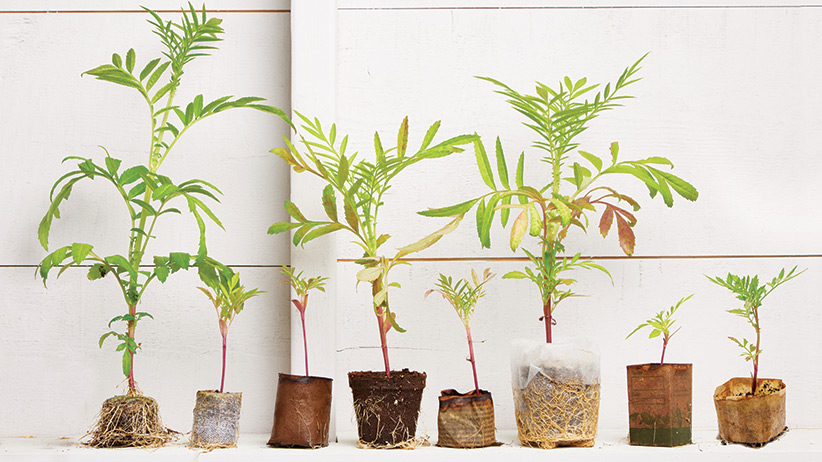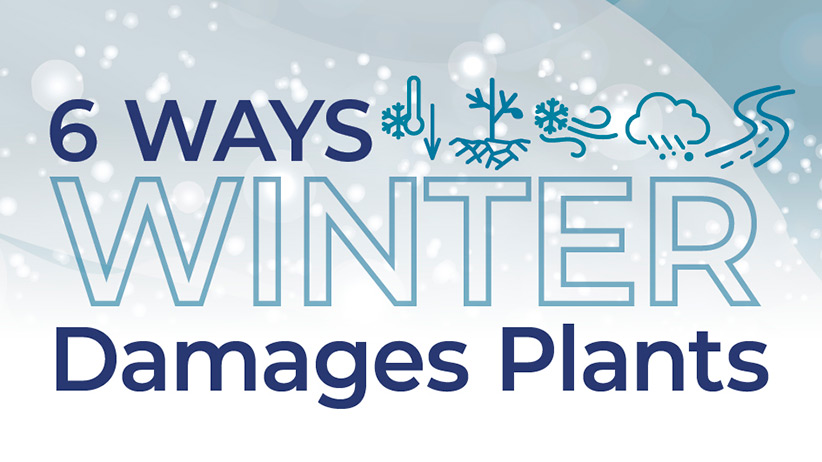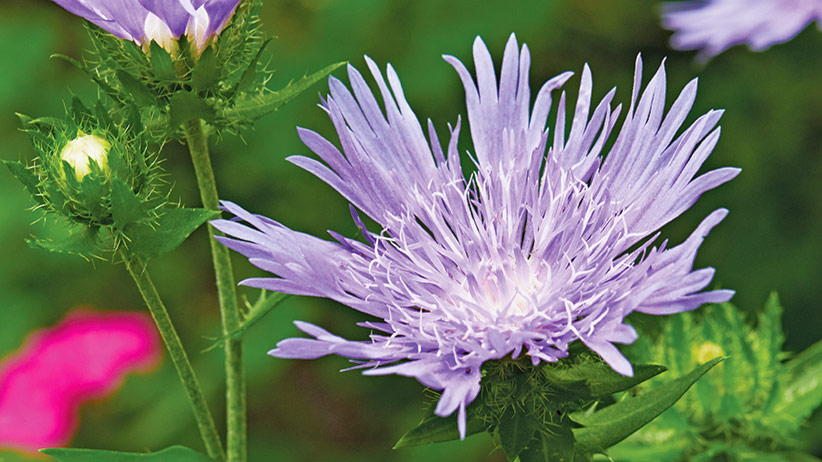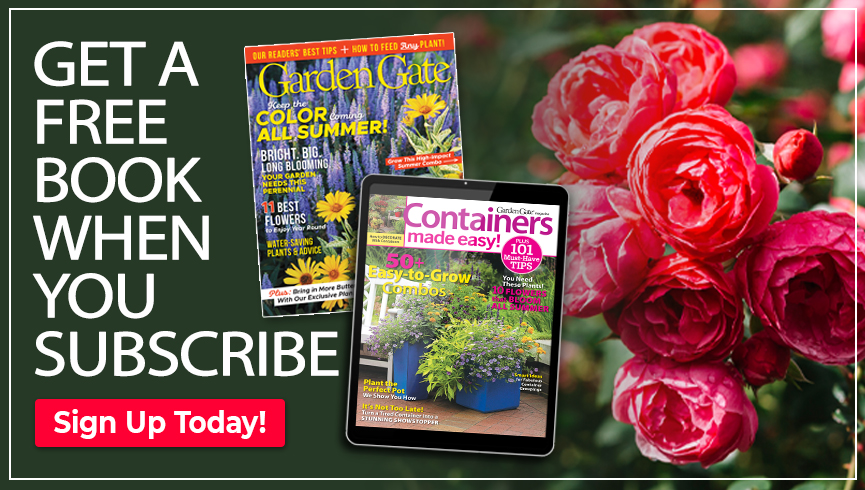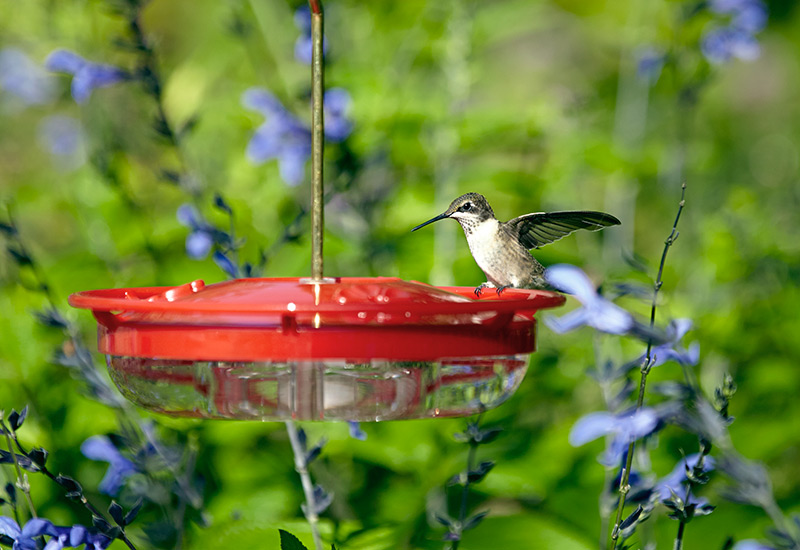
There’s nothing particularly mysterious or difficult about attracting hummingbirds. Appeal to their sweet tooth with nectar-filled hummingbird feeders and you have them hooked. Although a large part of their diet consists of tiny insects, they gorge on sweet nectar and visit almost any flower that has a good supply. And in between times, when flowers might be scarce, you can keep them well-fed with hummingbird feeders.
Choosing a hummingbird feeder
There are all kinds of hummingbird feeders available. But the kind of hummingbird feeder used is not nearly as important to the hummingbirds as it is to you. Most are made of plastic, glass or ceramic. Any kind, filled with fresh nectar, will attract hummingbirds. So look for those that will be easiest for you to keep filled and clean.
Once you’ve made the commitment to provide a feeder for your hummingbirds, you have to stick with it. They come to depend on you. Basin-style feeders, like the one in the photo above, top the list in our book. They’re large, flat pans with no narrow necks that need brushing and no corners to harbor bacteria, so they’re easier to keep clean than the inverted-bottle types.
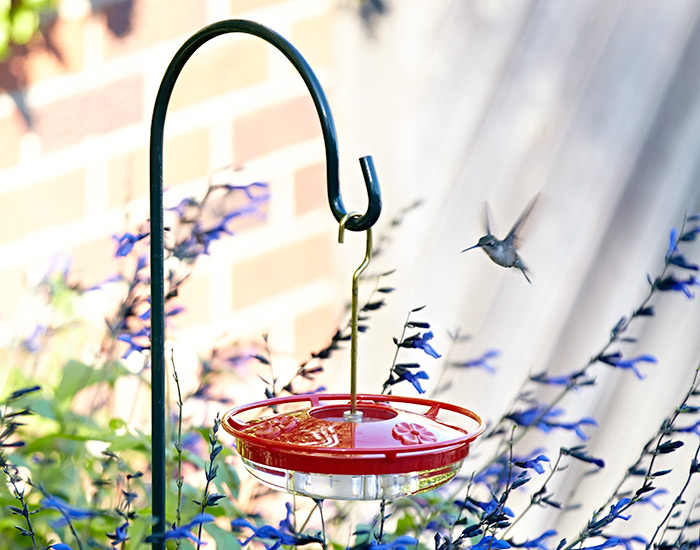
Where to put hummingbird feeders
What should you put in your hummingbird feeders and where should you hang them? Hummingbirds don’t instinctively recognize a feeder as a food source. But it won’t take these inquisitive creatures long to realize this odd-looking flower serves sweet nectar. So just about anywhere will be a good location as far as the bird is concerned.
For your enjoyment, hang a feeder near often-used windows, such as the kitchen or living room. Just be sure there’s something on or behind the windows to alert the little guys they can’t go in the window’s direction. Decals, flags or even miniblinds will be enough to keep them from flying into the glass.
And if you’re going to hang several feeders, keep them out of sight of each other. These creatures are territorial terrors, jealously chasing away any other hummingbird that comes by for a drink. Separating the feeders from each other will give more birds a fighting chance to get some nectar.
Hummingbird feeder tips
- Feeders all have red parts, so there’s no need whatsoever to add red food coloring to the nectar.
- Don’t overfill the feeder — birds only eat fresh nectar. Keep feeders sanitary by washing in hot water at least twice a week.
You Might Also Like:
Grow a garden hummingbirds love
10 plants to attract hummingbirds to your garden
How to attract more birds to your garden
Attract more hummingbirds with this garden plan
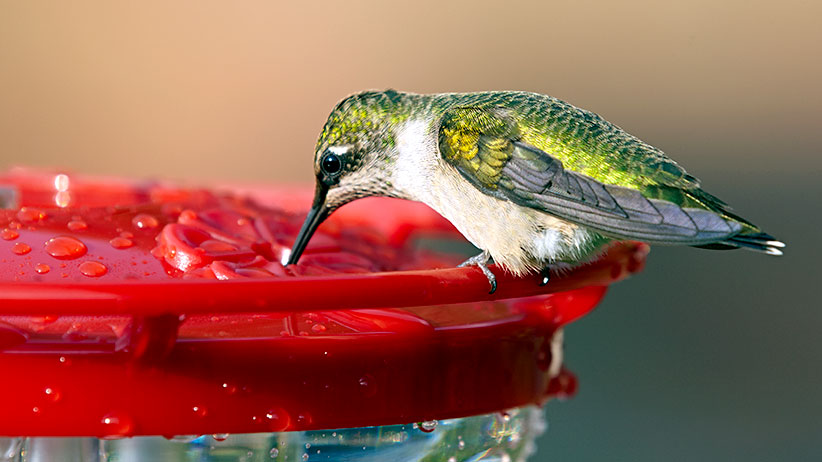
Nectar for hummingbird feeders
Speaking of nectar, the food in a hummingbird feeder is really only a supplement to their natural diet. It’s a quick boost of fuel to give the birds the energy they need to hunt insects and forage at flowers.
Natural flower nectar is primarily glucose and water, so simple cane sugar is the only food that should be used to make synthetic nectar for a feeder. Hummingbirds don’t require the vitamins, protein or other things added to commercial nectars. They get everything they need from the flower nectar and insects they eat.
Don't put these in hummingbird feeders
- Honey (It ferments rapidly in the warmth and light, and will poison the birds.)
- Flavored gelatin
- Brown sugar
- Fruit juices
- Red food coloring
How to make sugar nectar for hummingbird feeders
All it takes to make sugar nectar for the hummingbirds is 1 part white cane sugar to 4 parts water
Instructions:
- Bring the water to a boil and remove from heat.
- Stir in the sugar while the water’s still hot, stirring until all the sugar has dissolved.
- Let the mixture cool before filling the feeder.
- Store extra syrup in the refrigerator no more than two weeks.








